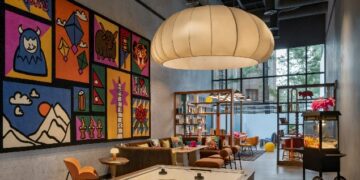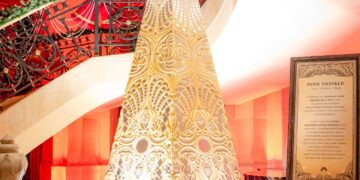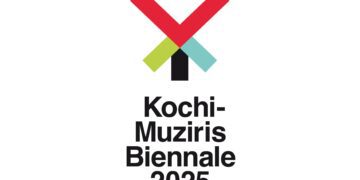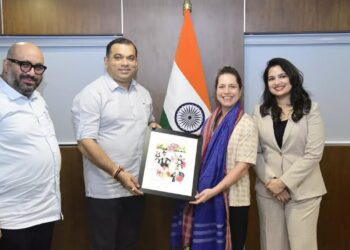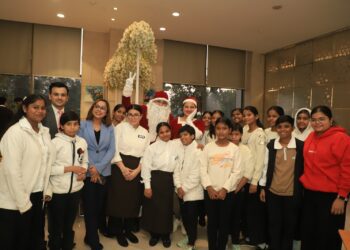In the presence of His Highness Sheikh Mohammed bin Zayed Al Nahyan, Crown Prince of Abu Dhabi and Deputy Supreme Commander of the UAE Armed Forces, His Holiness Pope Francis and Dr. Ahmad Al Tayeb, Grand Imam of the Al Azhar Al Sharif unveiled two new artworks belonging to Louvre Abu Dhabi and the Zayed National Museum.
HE Mohammed Khalifa Al Mubarak, Chairman of the Department of Culture and Tourism – Abu Dhabi, confirmed that the new artworks reaffirmation of the open dialogue promoted by the State and he commented, “It has been a great honour for Abu Dhabi to host the Human Fraternity Conference in the presence of two of the world’s greatest spiritual leaders, His Holiness Pope Francis and the Grand Imam of Al-Azhar, Dr. Ahmed Al-Tayeb. The unveiling of these two rare artworks, each representing a different faith, only served to enhance the theme of the conference – that openness and cultural dialogue are essential tools for building positive intercultural and interfaith relations.”
The two rare works are unique additions to the collections of the two international museums. Louvre Abu Dhabi has attracted more than one million visitors in its first year to view a collection narrating the universality of humanity, while the Zayed National Museum continues to strengthen its collection of world-class artworks that reflect the rich heritage of the UAE and wider Arab and Islamic worlds.
The first artwork, entitled “Christ shows his wounds”, is a quality addition to the permanent collection of Louvre Abu Dhabi. The 16th-century wooden sculpture, hailing from Germany or Austria, is a life-size statue of Christ, depicted carrying a crown of thorns and displaying his open wounds. Carved in the late Gothic period, the work is a late artistic expression of the Christian faith.
The second artefact, four pages from the famous Blue Quran manuscript dating from 800 to 1000 AD, will be exhibited at Louvre Abu Dhabi as a private loan from the Zayed National Museum collection. The Blue Quran is characterised by its gilded letters, written in Kufic script on rare blue-dyed parchment. The valuable materials used indicate that it would have been commissioned by a wealthy patron.



